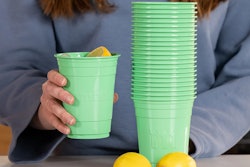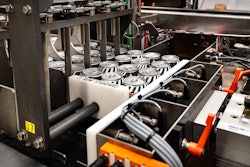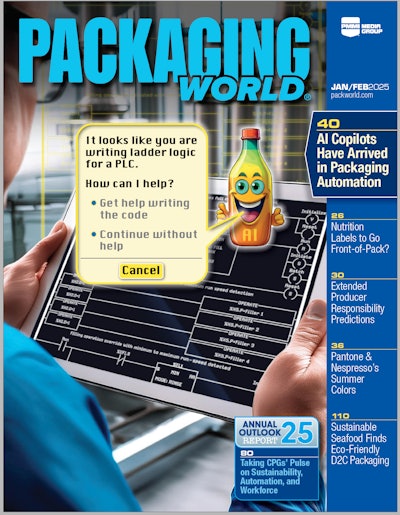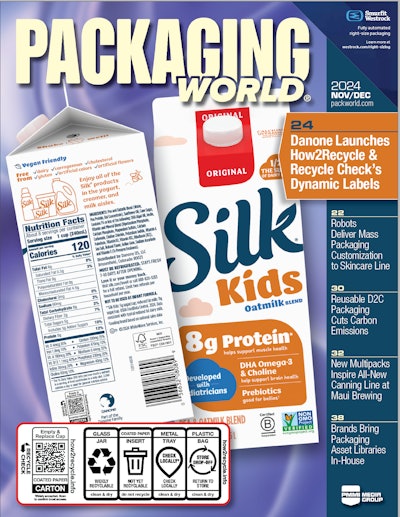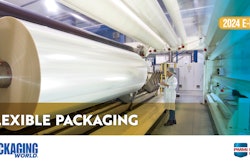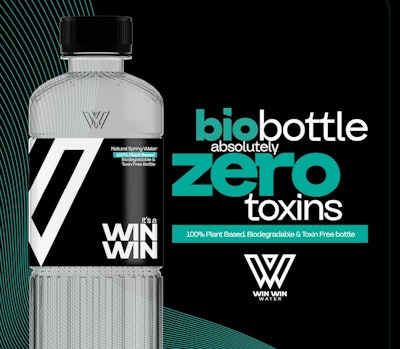
U.K. bottled water company Win Win Water was created to address the “effects of plastic on our planet and the effects of poor water quality on our body,” the company shares. Its response to these issues is a high-quality, naturally alkaline electrolyte spring water product in an industrially compostable bottle made from 100% plant-based materials.
 | Read about another compostable bottle, this one from organic grocer Erewhon and Cove, in this related article, “Biodegradable PHA Water Bottles Make Retail Debut” |
The Win Win water bottles, including the label and cap, are made entirely from Luminy PLA polylactic acid from TotalEnergies Corbion. According to the supplier, the PLA is made from sugarcane that is ethically farmed and sustainably sourced, ensuring a toxin-free product. The bottles are designed for rapid biodegradation and break down within 90 days in commercial composting facilities. According to a 2012 report, 271 composting facilities exist in the U.K. Despite their compostability, TotalEnergies Corbion says the bottles are durable enough for multiple reuses.
“Win Win Water was established with a mission to revolutionize the bottled water industry by combining purity, sustainability, and social responsibility,” says Joshua Daley, sales and marketing Director at Win Win Water. The company is committed to reducing the environmental impact of bottled water by using renewable, plant-based materials and supporting initiatives that remove ocean plastic while empowering vulnerable communities.
TotalEnergies Corbion says that the production of biobased Luminy PLA has a 75% reduced carbon footprint, including biogenic carbon, compared to conventional plastics. The company’s peer reviewed LCA analyses contain a more detailed overview of the global warming potential and of how Luminy PLA performs in other environmental impact categories such as carbon footprint, water footprint and direct land use change.
As the supplier explains, the sugarcane crops absorb carbon from the atmosphere while growing and store it in their biomass. This biogenic carbon is then transferred to the value chain to end up in the PLA final product. PW


.OvcZHe3G0k.jpg?auto=compress%2Cformat&fit=crop&h=67&q=70&w=100)


